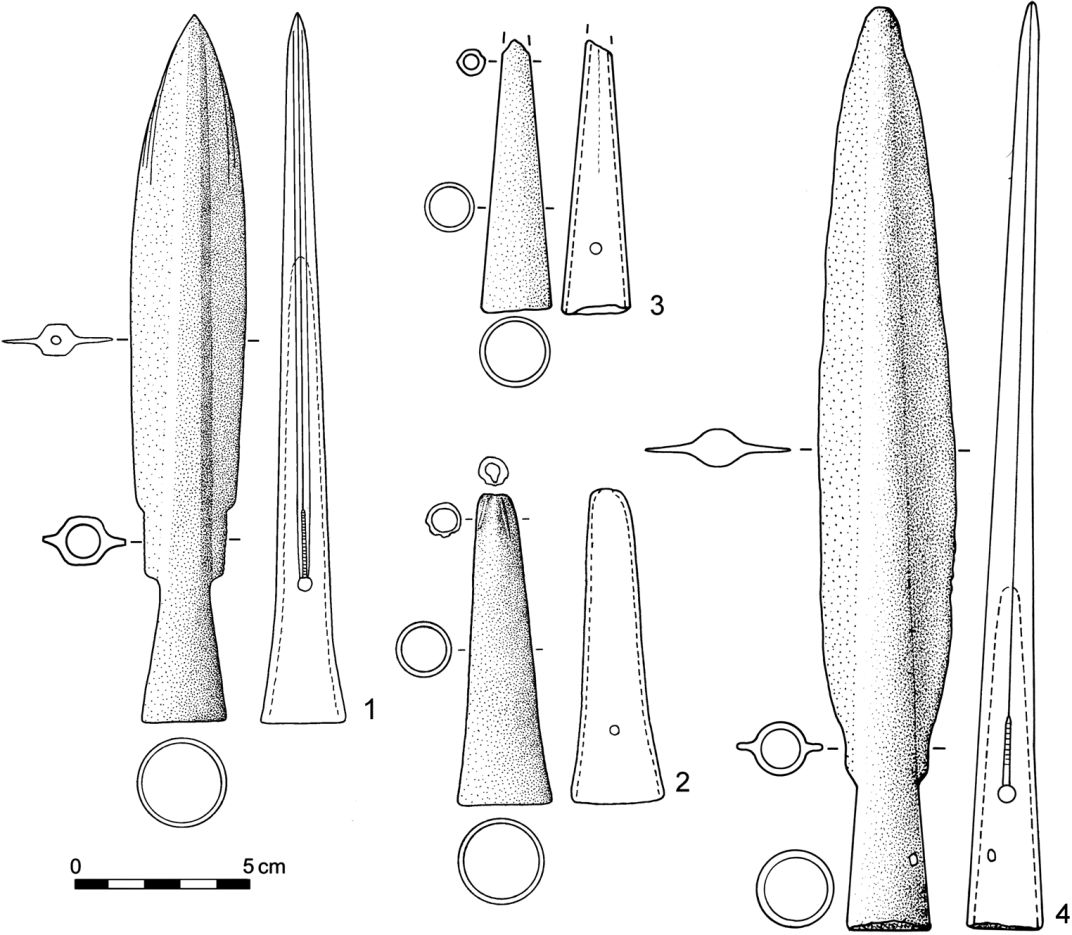Bronze spear components from Babice nad Svitavou (Brno-venkov district) and their contribution to an understanding of warfare during the Urnfield period and to a semantics of the sources
DOI:
https://doi.org/10.35686/AR.2016.10Keywords:
Late Bronze Age, Moravia, spear head, spear butt, ricasso, elemental compound, warfareAbstract
Two bronze artefacts (head, butt), discovered randomly in the same location, come from a whole spear that was originally intentionally thrust by the point into the ground. The head is a rare type with a slender, sharply set blade with a ricasso; it is dated to the early stage of the Urnfield period and represents an import of southern provenance in Moravia. The similar elemental compound with a higher content of tin in both artefacts testifies to a common technological and geographic origin. Based on the shape of the head and the ricasso, the spear was intended for contact battle and was used, similar to a sword, for both thrusting and chopping. The spear was found in a terrain depression near a rock wall at the southern border of a karst territory, 5–7 km north of a settlement area of the Middle-Danube Urnfield culture. The thrusting of the spear into the ground can therefore probably be interpreted as a symbolic part of a ritual at the outskirts of the unoccupied karst territory which, in a sense, is a mystical and transcendental space.
Downloads












